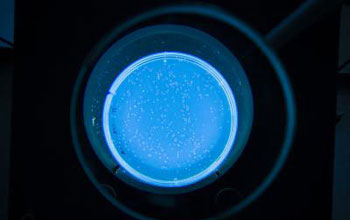
Genomic analysis of E. coli shows multiple steps to evolve new trait
| Long-term E. coli experiment yields surprising results regarding complex trait evolution. Credit and Larger Version |
September 19, 2012
View video interviews with Michigan State University postdoctoral researcher Zachary Blount and professor Richard Lenski.
Several years ago researchers at Michigan State University (MSU) reported discovering a novel, evolutionary trait in a long-studied population of Escherichia coli, a rod-shaped bacterium commonly found in the lower intestine of mammals. The E. coliadded a helping of citrate to its traditional diet of glucose, even though other E. coli can't consume citrate in the presence of oxygen.
These same biologists have now analyzed this new trait's genetic origins and found that in multiple cases, the evolving E. colipopulation needed more than one mutational step before the key innovation took hold. Complex traits, like using a new food source, are thought to be difficult and arise rarely, making the research of broad interest to both evolutionary biologists and public health scientists.
The findings, reported in this week's journal Nature, document the step-by-step process by which organisms evolve new functions. The study also highlights the importance of evolutionary changes that alter the physical arrangement of genes, leading to new patterns of gene regulation./.../
No comments:
Post a Comment